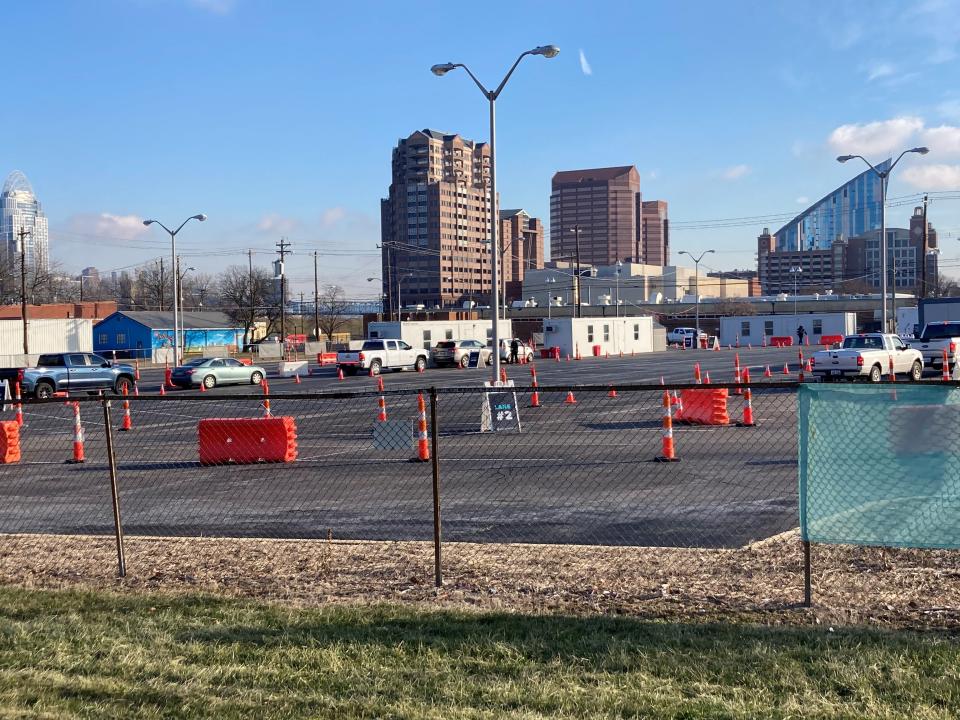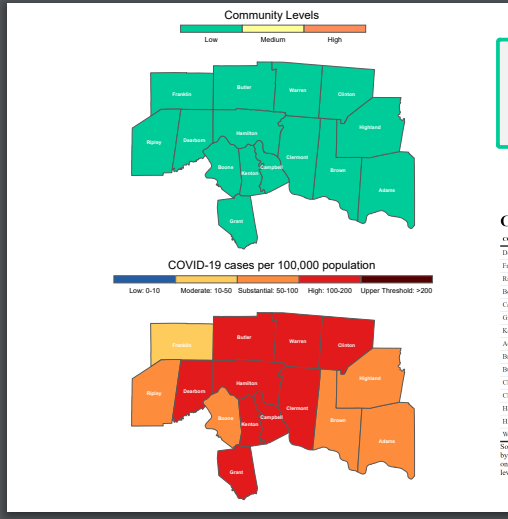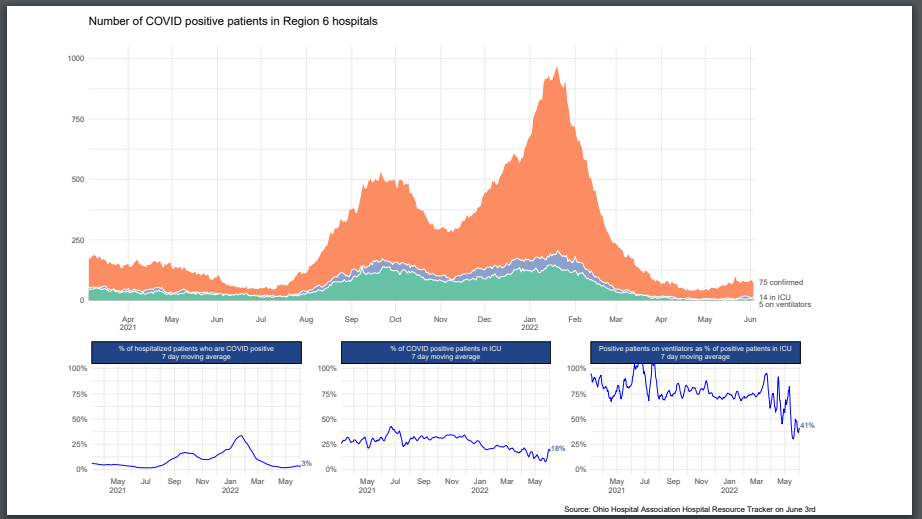COVID-19: Cincinnati area could be hit next after cases rise elsewhere in Ohio
Though community spread continues to remain low, experts at the Health Collaborative, the coordinating group for the region's 40 hospitals, anticipate Cincinnati could follow suit of northern parts of the state and soon see significant rises in COVID-19 in southwest Ohio.
Consistently throughout the pandemic, southwest Ohio has been a few weeks behind northeast Ohio in reporting COVID-19 surges. Such was the case during the omicron surge at the beginning of the year when local experts looked to Cleveland to anticipate what Cincinnati could face in the coming weeks. The Ohio National Guard was even deployed to southwest Ohio weeks after members first assisted hospitals and test sites in the Cleveland and Akron areas.
Because of this trend, Tiffany Mattingly, vice president of clinical strategies for the collaborative, says the public should continue to monitor levels in the community and across the state and remain vigilant about isolation guidance from the U.S. Centers for Disease Control and Prevention, which calls for a five-day quarantine if unvaccinated and exposed to the virus.
COVID at home: What do I need, doc? Tips on self-care
Masking: N95, KN 95 or surgical? Local doctors give advice
COVID tests:Tips on using home kits so you don't waste them
A rise in infections in the northeastern part of the state recently prompted Cuyahoga County to reinstitute a mask mandate in government buildings. The county's current community level has risen to a "high" classification as set by the CDC.
The Cincinnati region saw an increase in hospitalizations and the number of patients receiving care in the intensive care unit at the end of May. But Friday's update from the collaborative's situational dashboard shows that both of those figures have dipped back down. On May 26, the region had 85 hospitalizations, 17 patients in ICUs, and six patients on ventilators.

On Friday, those numbers dropped to 75 hospitalizations, 14 ICU patients, and five patients on ventilators. In the peak of omicron, hospitals saw as many as 1,000 COVID-19 patients.
ICU beds in the region are currently 93% full and medical-surgical beds are 97% full. Experts say residual effects such as long-term COVID-19 patients and the return of procedures that were delayed during the pandemic may continue to cause slightly higher hospital capacities for the foreseeable future.
"We're still in a very comfortable place," Mattingly said. "But I think you're hearing the noise of those early warning signs of looking at mask mandates again (in Cuyahoga). There's different conferences and events that are starting to think about requiring masks. So those are kind of the rumblings that are happening and I think it's important for people to stay vigilant and keep their awareness of what's happening in the communities up to date."
The majority of counties in Ohio remain at the level of low spread, but 18 counties are listed to have medium spread and six more are classified as having high spread. The state reported its first decrease in new cases (17,580) on Thursday after eight consecutive weeks of case increases.
Lawrence and Pike counties became the first southern Ohio counties to jump back to a high level of spread on Friday.
Though an increase in at-home testing has cheapened the full accuracy of case counts and dramatically altered the accuracy of positivity rates, Mattingly said the data is still able to show where a community is headed.


"I think it's reliable directionally," she said. "When it's showing that numbers are increasing, the epidemiologists and the data teams are able to apply a trajectory to that and determine at what level of an incline or how steep of an increase we're expected to see."
Cincinnati and Hamilton County began relaxing COVID-19 restrictions in March after dramatic drops in cases and hospitalizations took place.
What's been the local toll since the pandemic's start?
A total of 5,897 residents of the 16-county region have been reported as dying of COVID-19, an Enquirer analysis shows. A total of 556.603 cases of the illness have been reported. That number may not reflect the full picture because some people have had the disease more than once – and an untold number of infections aren't in the total because they were discovered by people using in-home tests and were not reported to health officials.
This article originally appeared on Cincinnati Enquirer: COVID-19: Rising cases elsewhere in Ohio may hit Cincinnati next

